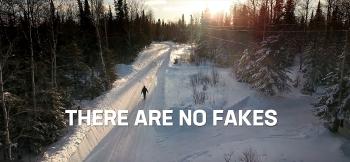Image Caption
Summary
Windspeaker.com Contributor
The most shocking aspect of filmmaker Jamie Kastner’s documentary “There Are No Fakes” should be how he carefully pieces together evidence of a fraud ring that paid artists to produce Norval Morrisseau paintings. But it isn’t.
“The fraud is kind of just the beginning. The fraud is by far the least shocking thing in this story… It just gets darker and darker and more and more twisted and there are a number of fascinating twists in there,” said Kastner, who admits some of those twists surprised even him.
The nearly two-hour long documentary was sparked by the court case initiated by Kastner’s high school buddy and Barenaked Ladies member Kevin Hearn. Hearn was awaiting his court date where evidence was going to be presented to determine that Spirit Energy of Mother Earth, the painting he purchased from the Maslak McLeod Gallery, was a fake Morrisseau.
Morrisseau, an Anishinaabe artist dubbed the “Picasso of the North”, was a member of the Indian Group of Seven. He was the first Indigenous artist to have his work shown in a contemporary art gallery in Canada. His work was also shown internationally. He passed away in 2007 at the age of 75.
Kastner was “intrigued” by what Hearn told him.
“I made it clear to him that if I were to do this story, I would appreciate his collaboration, but I would equally be talking to other sides of the story and Kevin would have no editorial control or say over the film in anyway,” said Kastner, who had been a print journalist. “The principles of journalism are still at the core of the work I do.”
Over the course of three years, Kastner raised funds for the project, undertook research and shot close to 30 hours of film. It took six months, not an unusual amount of time, he says, to edit the documentary, which is presented as a “trial within a trial.”
Kastner interviewed the players involved – art experts, gallery owners, an auctioneer, legal counsellors, artists, and others with personal connections to Morrisseau and to the events – who often contradicted one another. He did his interviews prior to the December 2017 court date hoping people would be more open with him.
“I think that each side had a point-of-view that they were trying to promote. Maybe once they saw the other sides’ cards, as it were, they may have been less forthcoming. And I think that’s probably true. I felt that I would get greater honesty from them before the trial, before they knew how it played out, before they could be either feeling smug at having won or bitter about having been defeated,” said Kastner.
Some of the comments that Kastner received during his interviews were disturbing with their threats of violence and racial slurs, stark confessions of sexual abuse, and detailed accounts of rampant drug use.
Kastner says there were a couple of people he wished he could have spoken to, including Gary Lamont. From the interviews and information Kastner collected, Lamont headed the Thunder Bay fraud ring that allegedly produced thousands of Morrisseau fakes. Lamont had been sentenced to five years in jail on five counts of sexual assault in early 2016. However, Kastner is confident that he spoke to “enough people close to that person who could bring him to life.”
Kastner also didn’t get the opportunity to speak to Joe McLeod, the owner of Maslak McLeod Gallery, as he passed away early in 2017.
Kastner admits there were aspects of the Morrisseau story that he chose to leave out, including that the fraud ring the documentary outlines was investigated by the Thunder Bay police, but charges were never laid, and that another court case challenging the authenticity of another Morrisseau painting was unsuccessful.
“You’ve just got to make painful choices to get the essence of the story in there and you hope you make the right ones,” he said.
Kastner’s documentary style is to unfold the story gradually instead of disclosing everything the viewer needs to know in the first five minutes.
“My sense is maybe you can intrigue a wider range of people and get people who are already not part of the choir, as it were, to think about things if you take a different approach,” he said.
The ride he takes the viewer on ramps up. The documentary concludes with the result of Hearn’s court case relegated to words on an end card. The Hearn court case was only a “loose framework” by which to tell “a fairly shocking story on latter day colonialism,” said Kastner.
“Here it is happening in a very palpable way that I actually managed horrifyingly to capture on camera … (and it) is so shocking to the average white urban liberal person that that kind of shit still goes on yet absolutely important for them to see as a result. It is a remarkable story of abuse on so many levels, on cultural levels, on personal levels. That’s the story I set out to tell,” he said.
“There Are No Fakes” will have its world premiere at Hot Docs in Toronto this spring. It will be broadcast on TVO sometime this fall.
Related Stories:
Tie goes to the defendant https://windspeaker.com/news/windspeaker-news/tie-goes-to-the-defendant-morrisseau-painting-authentic-says-court
Not Funny: Fake Morrisseau messing up the market https://windspeaker.com/news/windspeaker-news/not-funny-fake-morrisseaus-messing-up-the-market-says-indian-group-of-seven-artist
Authentic or Fake? Barenaked Ladies’ Kevin Hearn back in court https://windspeaker.com/news/windspeaker-news/authentic-or-fake-morrisseau-barenaked-ladies-kevin-hearn-case-back-in-court-monday

